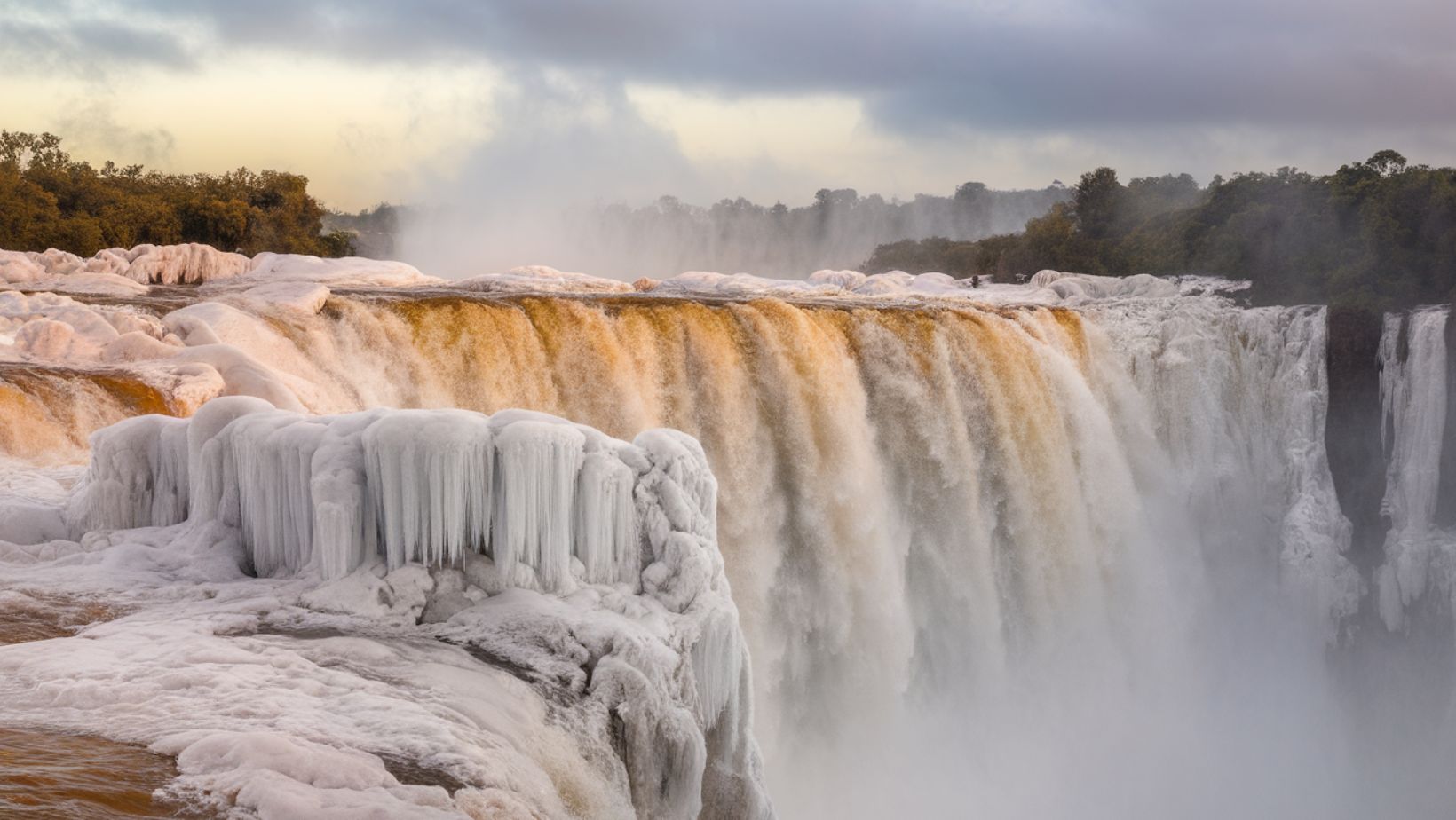What natural alchemy turns a waterfall’s spray into liquid amber? How do ancient hemlocks and spruce trees create nature’s perfect tea cascade? What transforms this golden wonder into a crystalline ice palace each winter? Deep in West Virginia’s Allegheny Mountains, where tannin-rich waters meet dramatic elevation changes, Blackwater Falls performs a color-changing spectacle that challenges our expectations of what a waterfall should be.
Blackwater Falls Stands as Americas Most Uniquely Colored Cascade
Plunging 57 feet in a curtain of amber-tinted water, Blackwater Falls presents a spectacle unlike any other in the eastern United States. Like other magical natural pools, its distinctive coloring comes from a specific natural process. The falls’ unique amber hue results from tannic acid leached from hemlock and red spruce needles in the surrounding forests, creating a natural tea that flows year-round.
Five Strategic Viewpoints Offer Perfect Perspectives
The falls’ viewing infrastructure rivals that of other significant waterfalls, with five distinct observation points providing unique perspectives. Each platform has been carefully positioned to showcase different aspects of the falls, from the direct frontal view to upstream and downstream vantages. These multiple viewpoints allow visitors to appreciate the falls’ color changes throughout the day and seasons.
Winter Transforms Amber Waters Into Crystal Palace
During winter months, Blackwater Falls undergoes a magical transformation similar to other world-class natural attractions. The amber waters freeze into massive ice formations, creating a crystalline display that contrasts dramatically with the falls’ usual golden hue. These ice formations can grow to impressive dimensions, sometimes completely encasing the rock face in translucent amber ice.
Natural Tea-Making Process Creates Unique Ecosystem
The tannic acid that colors the falls creates distinct conditions for aquatic life. The acidic water supports specialized species adapted to these unique chemical conditions. Scientists study this ecosystem to understand how organisms adapt to naturally acidic environments, providing insights into environmental resilience.
Seasonal Colors Transform Viewing Experience
Each season brings new dimensions to Blackwater Falls’ color palette. Spring’s high water volume intensifies the amber color, while summer sunshine creates golden sparkles in the mist. Fall surrounds the falls with complementary autumn foliage, and winter contrasts the golden water with white snow and ice formations.
Photography Opportunities Challenge Creative Skills
The falls’ unique coloring presents both challenges and opportunities for photographers. The interaction between amber water and changing light conditions creates distinctive effects throughout the day. Long-exposure techniques reveal the water’s silk-like quality, while winter ice formations offer dramatic macro photography possibilities.
Conservation Efforts Protect Water Quality
Maintaining Blackwater Falls’ distinctive color requires protecting the entire watershed. Conservation efforts focus on preserving the hemlock and spruce forests that create the tannic acid. Programs monitor water quality and forest health while controlling invasive species that could alter the natural chemical balance.
Geological Features Frame Perfect Setting
The falls’ location in a deep gorge enhances its visual impact. The dark rocks of the gorge walls contrast with the amber water, while their geological composition provides stable foundations for viewing platforms. The gorge’s orientation also creates ideal lighting conditions during different times of day.
Educational Programs Highlight Unique Chemistry
Interpretive programs at Blackwater Falls State Park use the falls’ distinctive color to teach visitors about natural chemistry. Demonstrations show how tannic acid forms and affects water properties, while exhibits explain the relationship between forest ecology and water quality. These programs help visitors understand the complex interactions that create natural wonders.
Climate Change Impacts Require Monitoring
Changes in temperature and precipitation patterns could affect the falls’ characteristic color. Scientists monitor forest health, water chemistry, and seasonal flow patterns to understand how climate change might impact this unique feature. This research helps managers develop strategies to protect the falls’ distinctive characteristics.
Future Plans Enhance Visitor Experience
Looking ahead, park managers continue developing ways to improve the Blackwater Falls experience while protecting its natural features. Plans include upgrading viewing platforms, expanding educational programs, and implementing new technologies for monitoring water quality and forest health. These improvements aim to ensure future generations can experience the falls’ unique beauty while understanding its ecological significance.
